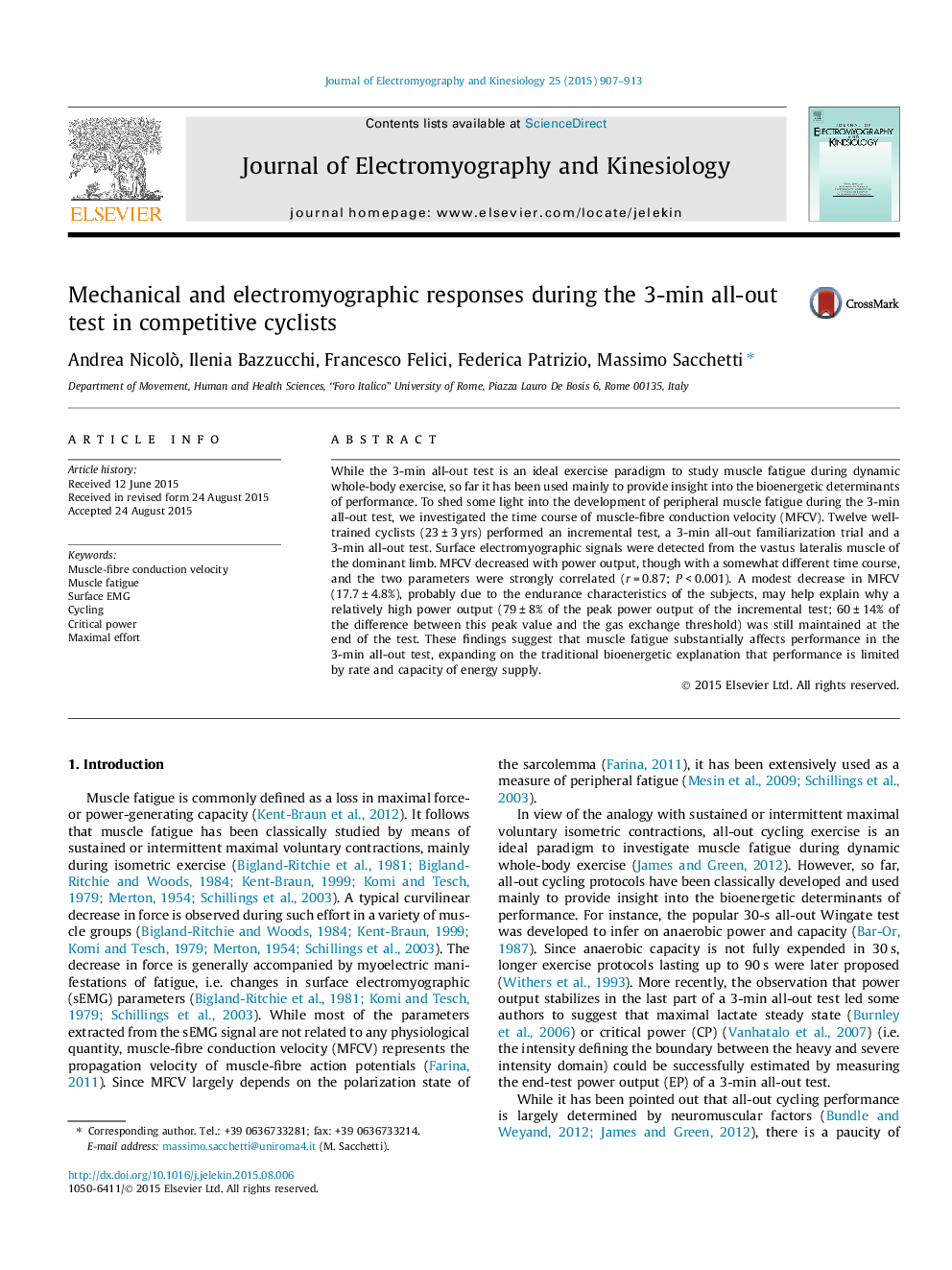| کد مقاله | کد نشریه | سال انتشار | مقاله انگلیسی | نسخه تمام متن |
|---|---|---|---|---|
| 4064498 | 1266212 | 2015 | 7 صفحه PDF | دانلود رایگان |
While the 3-min all-out test is an ideal exercise paradigm to study muscle fatigue during dynamic whole-body exercise, so far it has been used mainly to provide insight into the bioenergetic determinants of performance. To shed some light into the development of peripheral muscle fatigue during the 3-min all-out test, we investigated the time course of muscle-fibre conduction velocity (MFCV). Twelve well-trained cyclists (23 ± 3 yrs) performed an incremental test, a 3-min all-out familiarization trial and a 3-min all-out test. Surface electromyographic signals were detected from the vastus lateralis muscle of the dominant limb. MFCV decreased with power output, though with a somewhat different time course, and the two parameters were strongly correlated (r = 0.87; P < 0.001). A modest decrease in MFCV (17.7 ± 4.8%), probably due to the endurance characteristics of the subjects, may help explain why a relatively high power output (79 ± 8% of the peak power output of the incremental test; 60 ± 14% of the difference between this peak value and the gas exchange threshold) was still maintained at the end of the test. These findings suggest that muscle fatigue substantially affects performance in the 3-min all-out test, expanding on the traditional bioenergetic explanation that performance is limited by rate and capacity of energy supply.
Journal: Journal of Electromyography and Kinesiology - Volume 25, Issue 6, December 2015, Pages 907–913
